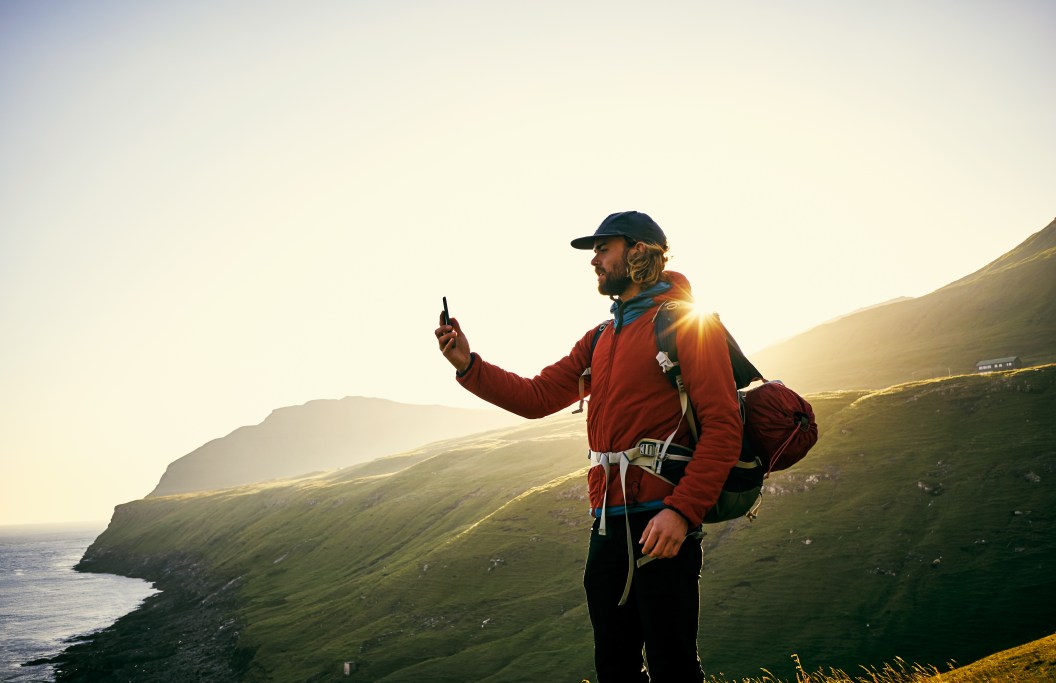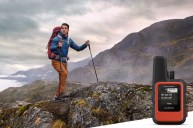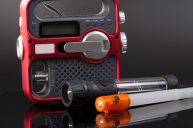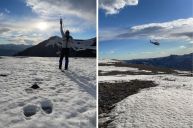In May, a group of teenage hikers got lost in California's Santa Paula Canyon near the Last Chance Trail. Most of them were reportedly unprepared for the conditions of the trail, which had been damaged by heavy rains. They had no food, no water, no lights for after-dark hiking and, most notably, no satellite communicating device.
But being Gen Z, they knew exactly the multitool that could help: The wayward hikers used Apple's new Emergency SOS feature.
The teens were able to send a text message through their iPhone that automatically dispatched to local emergency services, providing valuable information such as a possible location and whether immediate medical aid was needed.
Based on this, the Ventura County Sheriff's Office reported that a team was dispatched and the hikers were located and rescued.
Seasoned hikers know one of the most important emergency items you should bring on a hike is a satellite messenger. But in this particular situation, an item already in everyone's pocket saved the day.
Does that mean you can ditch a satellite messenger for good?
A Lucky Break
While the hikers in California made it out relatively unscathed, this particular situation shouldn't be considered the norm.
"People think of their phones as this backcountry Swiss army knife, and they are not," says John Bulmer, founder and former president of the wilderness search and rescue non-profit Adirondack Mountain Rescue in New York.
The Ojai teens were lucky that they were in service and had enough juice in their phone—both requirements for the iPhone's SOS system to work.
For the everyday hiker, phones can break easily if they are dropped on a rock. Batteries die quickly when airplane mode isn't turned on in spotty service.
"We tell people not to rely on phones alone," Bulmer adds. "These devices are amazing anywhere else—but in the backcountry, hikers still need backup systems."
The Differences Between Cell Phones and Satellite Messengers
The biggest difference between your cell phone's ability to help in an emergency and a sat phone is, put simply, whether or not you have service: Satellite phones receive and send messages via, unsurprisingly, satellites, which can nearly always be contacted from the ground. An iPhone, meanwhile, relies on the usual cell phone towers to remain connected—and hiking trails often meander out of service.
There's more that makes the iPhone's SOS system less advantageous, including some usability issues that Bulmer points out:
A phone often needs to be unlocked by its user before the SOS system can be accessed, which requires you to be alert and somewhat mobile and have access to the phone in front of your face. Remember: We're talking about emergencies. With a satellite device, sending a message is typically as easy as pressing a button, even if you're just reaching a hand inside a backpack.
Another issue is that while satellite systems are connected to the International Emergency Response Coordination Center (IERCC), a global network of first responders, Apple has its own dispatch routing system for summoning help where it's needed.
"IERCC is the gold standard of relay stations," Bulmer says. "They have experienced people who can dispatch the appropriate resource to the situation."
Apple's response center is less experienced and less specific. So while it was fine (and crucial) for teenagers simply getting lost on a non-backcountry trail, it might not be as helpful if you're actually in the backcountry or have an emergency more severe than disorientation.
Lastly, Apple's SOS feature also lacks the two-way messaging capabilities that may be essential in determining the type of response needed for an emergency (like an air evac for a serious medical emergency, for example).
Always Hike Prepared
Having an iPhone is better than nothing and will probably serve you fine for popular trails near multiple cell towers (although we'd definitely recommend hiking with an external battery). But if you're hiking out of service, carrying a satellite messenger can mean the difference between, well, help and no help in an emergency.
Some top-rated satellite communicators are the Garmin inReach, the ZOLEO Satellite Messenger, and the Garmin GPSMAP 66i.
While these are more reliable than a cell phone for backcountry communication, such devices can fail. Therefore, hikers should also carry a map and compass and, most importantly, know how to use them. In addition anyone exploring the great outdoors should bring along the 10 essentials for a day hike.
READ MORE: DIY First Aid Kit: Supplies to Bring on Every Adventure




